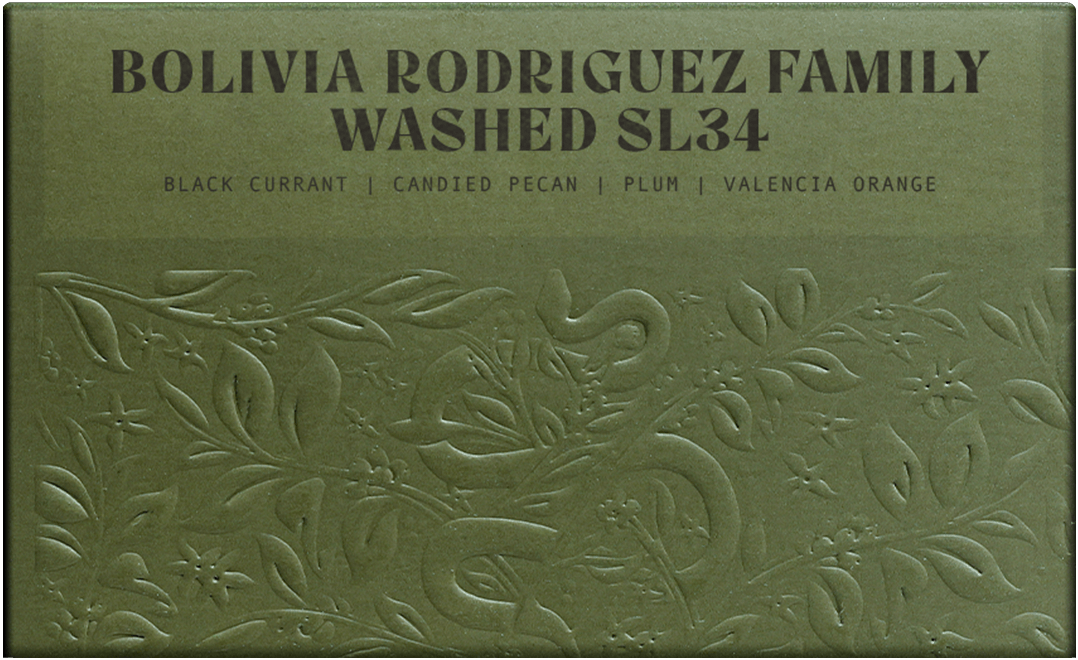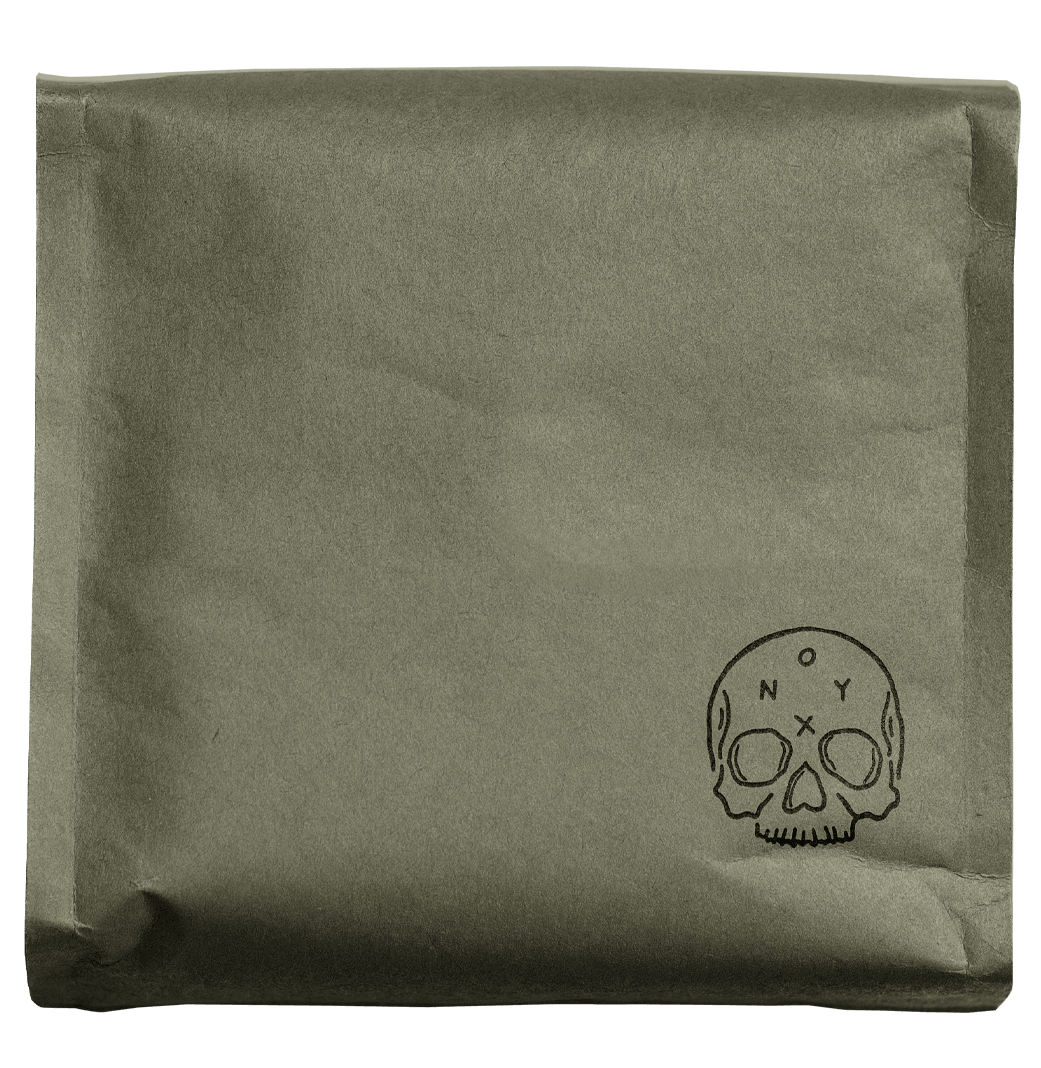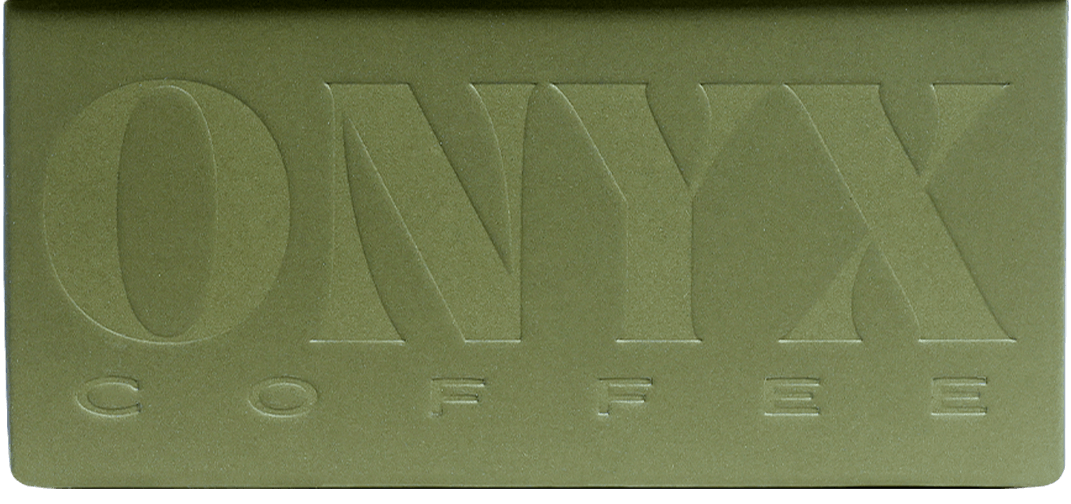Story
This coffee came to us via Royal Coffee as a spot offering. Royal has a program known as the Crown Jewels program, where exceedingly high scoring coffees are separated out, vacuum packed, and packaged in small boxes. Alongside sourcing high quality microlots, they also include in depth write ups on each offering, like the one you can find below.
Agricafe is one of the most sought-after producer groups not just in Bolivia, but in all South America, and buyers line up every year for their one-of-a-kind microlots. For many roasters, Bolivia’s cup quality – as exemplified by Agricafe’s selections – is representative of the country’s potential to produce diverse, fascinating, unexpectedly delicious lots that grab our attention and won’t let go.
This is a washed microlot of the traditionally Kenyan cultivar, SL-34, propagated specially by the Rodriguez family on their own farms. The cup is indeed quite Kenya-like with bright mandarin orange, peach, pineapple, and caramel.
Specialty groups like Agricafe deserve a lot of credit for their dedication to Bolivia’s coffee potential, despite the odds. Agricafe was established in 1986 as a passion project by Pedro Rodriguez, who at that time was a banker whose love for coffee led him to start a small commercial grade exporting business. In 2012, 26 years later, Rodriguez acquired land of his own in Caranavi. This part of Bolivia had for decades been populated with indigenous smallholder coffee farmers, but after suffering multiple waves of disinvestment by the government the population was shrinking, and coffee in particular was close to extinction.
Rodriguez’s original farm “La Linda” was meant to take advantage of affordable land in the area and to demonstrate to local smallholders how productivity could be increased for their benefit. Now, 10 years after La Linda was built, the family business includes 12 family farms between Caranavi and Samaipata to the south, and a group of 100 smallholders who together comprise Agricafe’s “Sol de la Mañana” program. Pedro’s daughter Daniela and son Pedro Pablo are also part of the business, managing commercial operations and farmer training.
The Rodriguez family’s Samaipata farms are some of the region’s first coffee plantations. Samaipata and the greater Santa Cruz department are well-known for wine production, and for a cosmopolitanism not shared by the more austere cultures of La Paz and the heavily-indigenous Yungas regions. The family farms reach higher altitudes here than in Caranavi and are less humid with less rainfall, making processing a more predictable affair.
All coffee from Rodriguez family farms is processed centrally at Agricafe’s wet mill Samaipata. Processing here has come to reflect the innovation and attention to detail that the Rodriguez family seems to exude against all odds for such a remote location. Cherry is collected each day at the farms and delivered to the wet mill in the evenings. Cherry is carefully sorted on arrival, and then, since every cherry delivery is treated as a unique microlot, it’s processed according to what Agricafe’s quality managers decide is the best pairing for a particular farm, cultivar, time of year, and in many cases buyer specification. Washed coffee processing is done anaerobically by default, with freshly-pulped parchment going straight into large sealed plastic drums for fermentation. Once fermentation is complete the drums are emptied and the parchment (and drums themselves) are pressure-washed clean.
Agricafe produces washed, natural, honey, anaerobic natural, and experimental fermentations using coffee fermentation must, all in a very compact production space. A full harvest at Agricafe generates thousands of unique lots of coffee, which are then recombined by their cuppers or buyers to create larger lots, such as this one.
The SL-34 seedstock was originally sourced by the Rodriguez family from farmer connections in Kenya. Propagation began as an experiment, but the trees’ high production and exceptionally bright cup quality convinced them to plant more and more in recent years.
WASHED PROCESSED COFFEES
The washed process begins with coffee cherries delivered to the washing station, both from the primary market or from farmers bringing their coffee directly to the mill. The cherries are inspected, and an initial quick round of hand-sorting separates the defective coffees before placing them into the hopper. They are then funneled to the depulper, which removes the fruit from the seeds (beans). After that phase is done, the coffee is fermented underwater for approximately 12-36 hours. During this fermentation, a microbial de-mucilagation takes place, which allows the outer fruit and pectin layer to break down, making the coffee easier to dry. This phase also crucially alters the organic acids within the coffee, as sugars and organic acids are transformed, with the best washed coffees maintaining their complex fruit esters. Once the fermentation is complete, the parchment is emptied into the washing channels, where it is agitated with rakes to remove the last of the fruit layer. During this step, the water is refreshed to ensure its capability of separating the fruit layer from the seed. Once the washing is complete, the coffee is taken to the raised drying tables for sun drying.





